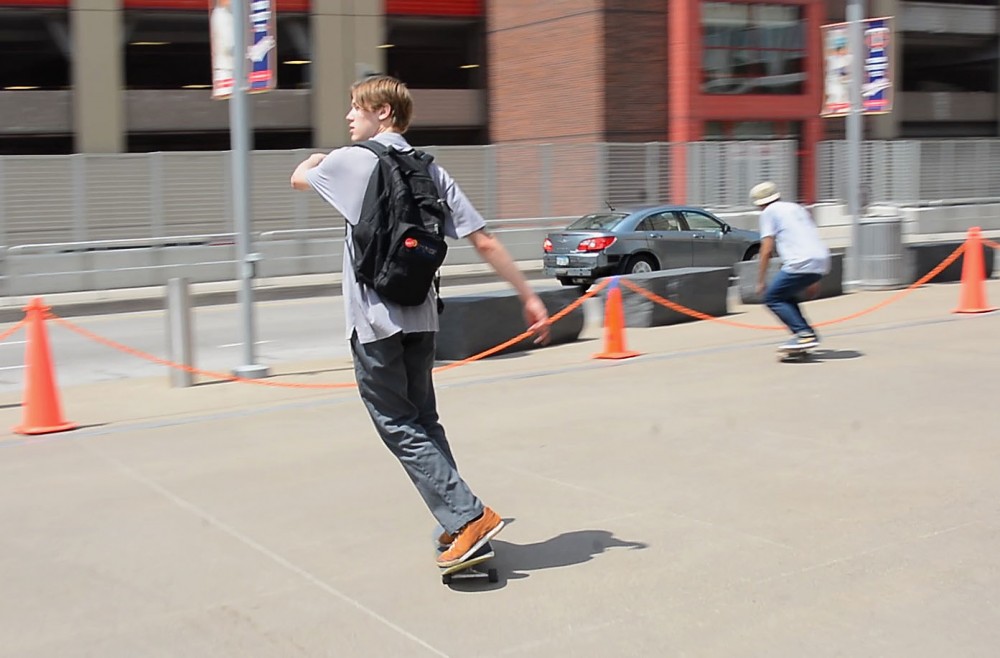Local skate advocacy group City of Skate teamed up with the Minneapolis Park and Recreation Board two years ago to learn how to improve area parks to better serve the growing needs of diehard skaters.
Now, the group awaits the park board’s final plan detailing what changes could be made to existing or new parks.
Between 2002 and 2004, the board implemented six skate parks throughout the city, but University of Minnesota Skate-U-Mah president and geography senior Dan Rusin said the parks weren’t made to fit any skater’s skill level and are restrictive for those with more experience.
Most of the parks have the same design and are enclosed by a fence, which City of Skate member Paul Forsline said isn’t conducive to creating a street-like environment.
“There has always been a healthy skate community in Minneapolis,” he said, “but there’s not great public facilities.”
Instead, many skateboarders turn to the streets or private indoor skate parks built for more advanced skaters, Rusin said.
“The indoor parks were built by skateboarders, so they know what skateboarders want right now, which is the streets,” he said.
City of Skate formally gave itself a name in the summer of 2013 — half a year into discussions with the park board.
The group distributed a park board survey that year to gauge what types of improvements to city skate parks local skaters would like to see.
The survey garnered more than 1,300 participants, a majority of which were men ages 18 to 24 who skate in the University area and central and northeast Minneapolis.
Based on survey results, park board project manager Colleen O’Dell said the board is drafting a citywide plan that looks to better existing parks and add others.
A majority of the survey respondents requested unfenced free parks, bathrooms, shade, extended hours and lighting.
The advantageous thing about skate parks, Forsline said, is that they can be put virtually anywhere, like unused land under freeway overpasses.
He said skaters around the University would like a park in the Northeast Quarry. Some skaters have already designed plans for a park, but nothing has been approved.
A park near campus could relieve the school of trespassing skaters and give them a place to practice, Rusin said.
Until then, he said the University offers skaters challenging obstacles they can’t find at local parks.
“Campus obviously wasn’t designed for skateboarding, but it might as well have been,” he said, adding many skaters have been ticketed while boarding on campus.
University Police Lt. Troy Buhta said skateboarding on campus becomes trespassing when boards aren’t used solely as a means of transportation.
“When someone starts interfering with pedestrian flow or doing tricks or destroying property, that’s when we have an issue,” Buhta said.
The closest public skate park to the University is Elliot Park in downtown Minneapolis, and though Rusin said it doesn’t emulate the feeling of skating on the street, he said he tries to go there as much as possible.
The board’s draft skate park plan will be completed by the end of the summer, O’Dell said.
Until then, Forsline said City of Skate will continue to advocate for skate parks and will begin fundraising efforts.








